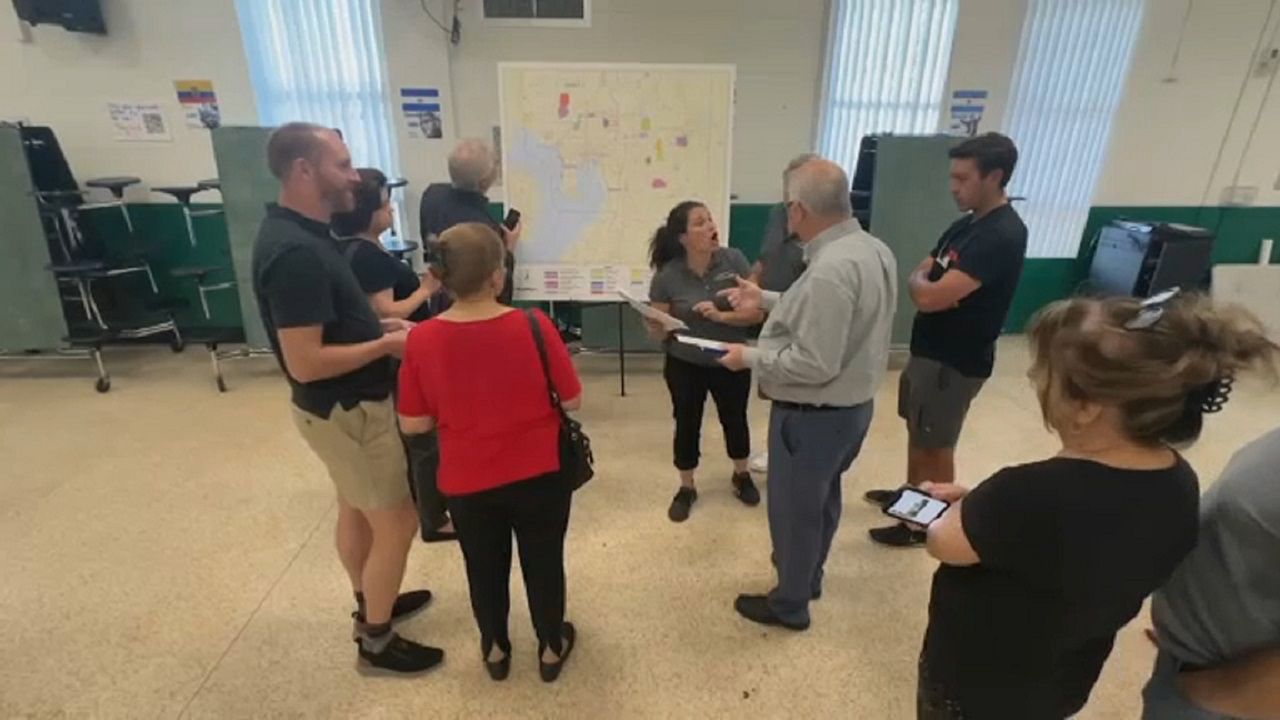TAMPA, Fla. — The Tampa Housing Authority addressed Robles Park Village residents for the first time Thursday about what they know about a historic cemetery that existed on the complex. They also heard about plans for their relocation from the site.
- 5 Robles Park Village buildings may have been built on top of Zion Cemetery
- Ground-penetrating radar revealed anomalies that could be grave sites
- Residents will have options for relocation
- More Hillsborough County stories
"My anxiety level was up high when I found out. I was kind of upset, but ain't no sense of being upset, you know what I'm saying?" said Dania Wiles, who's lived in Robles Park for 11 years. "All we need to do is come to a conclusion about the situation, and then we all can move on."
Tampa Housing Authority Senior Vice President and COO Leroy Moore said officials first became aware that five Robles Park buildings may have been built on top of Zion Cemetery, believed to be the city's first African American resting place, through an investigative report in the Tampa Bay Times.
Moore said that although it was thought bodies were removed before the complex was built in the 1950s and re-interred elsewhere, it's possible an undetermined number may remain.
"Now, understanding what was here and what, unfortunately, may still be interred, I think it's incumbent on the housing authority, the city, the private owners that share this two-and-a-half acre site, to make better decisions today," Moore said.
Residents will have relocation options
At Thursday evening's meeting, representatives from Cardno, a professional infrastructure and environmental services company, told residents that ground-penetrating radar has detected anomalies that could be grave sites.
An analysis is being done to determine if remains were detected or if the radar is picking up disturbances left in the ground from when the bodies were moved. Moore said it's important to find out the truth about what's beneath the complex.
"The only way we're going to find that is to analyze this ground-penetrating radar and to eventually start excavating to confirm whether or not coffins and bodies are still interred here. We certainly don't want to do that process with families living among this area," said Moore.
Moore told residents they'll have three choices when it comes to relocation: they can move to one of 30 vacant Robles units or into one of the housing authority's 30 other properties. Those who want to leave the THA system can choose to get a tenant based voucher and move into a privately-owned Section 8 apartment.
Relocation benefits will be available to help with the cost of moving. Counseling services will also be provided for those who are having a hard time coping with the situation, either with the stress of moving or with the knowledge that they've been living on top of a forgotten cemetery.
"I don't think we heard from any of the family members here today that they want to continue to live on this land," Moore said.
Future for site?
Wiles said she was more upset about learning about the cemetery than about the relocation. She said she'd like to see the site turned into a memorial.
"It's important to all nationalities, not just black -- Caucasian, Puerto Rican, don't matter. It's a resting place, and a resting place is supposed to be a resting place," Wiles said.
Moore said he has a similar vision.
"Turn it into a place that people can be respectful of the history of this area. Maybe it becomes a memorial site. Maybe it becomes just an active cemetery," he said.
Building-by-building meetings are expected to begin in two weeks to give residents more information about relocation and let them know what their responsibilities are during the process.
How does a cemetery disappear?
In his investigative report for the Tampa Bay Times, reporter Paul Guzzo wrote about what might be the missing first African American cemetery in Tampa - Zion Cemetery.
But just how does a cemetery disappear for 100 years?
In the process of answering that question, Guzzo unearthed a Hillsborough County public record of the map of Zion Cemetery from 1901.
In his reporting, by the 1920s the records had vanished. It's not until 1951 that developers of the Robles Park Apartments discovered three caskets interred on the property.
Tampa Housing Authority records indicate they talked about re-internment, but there was no effort to look for more bodies.
There were also no state laws at the time that would've prevented developers from building on a possible archaeological site.
Those laws are strictly enforced today.








